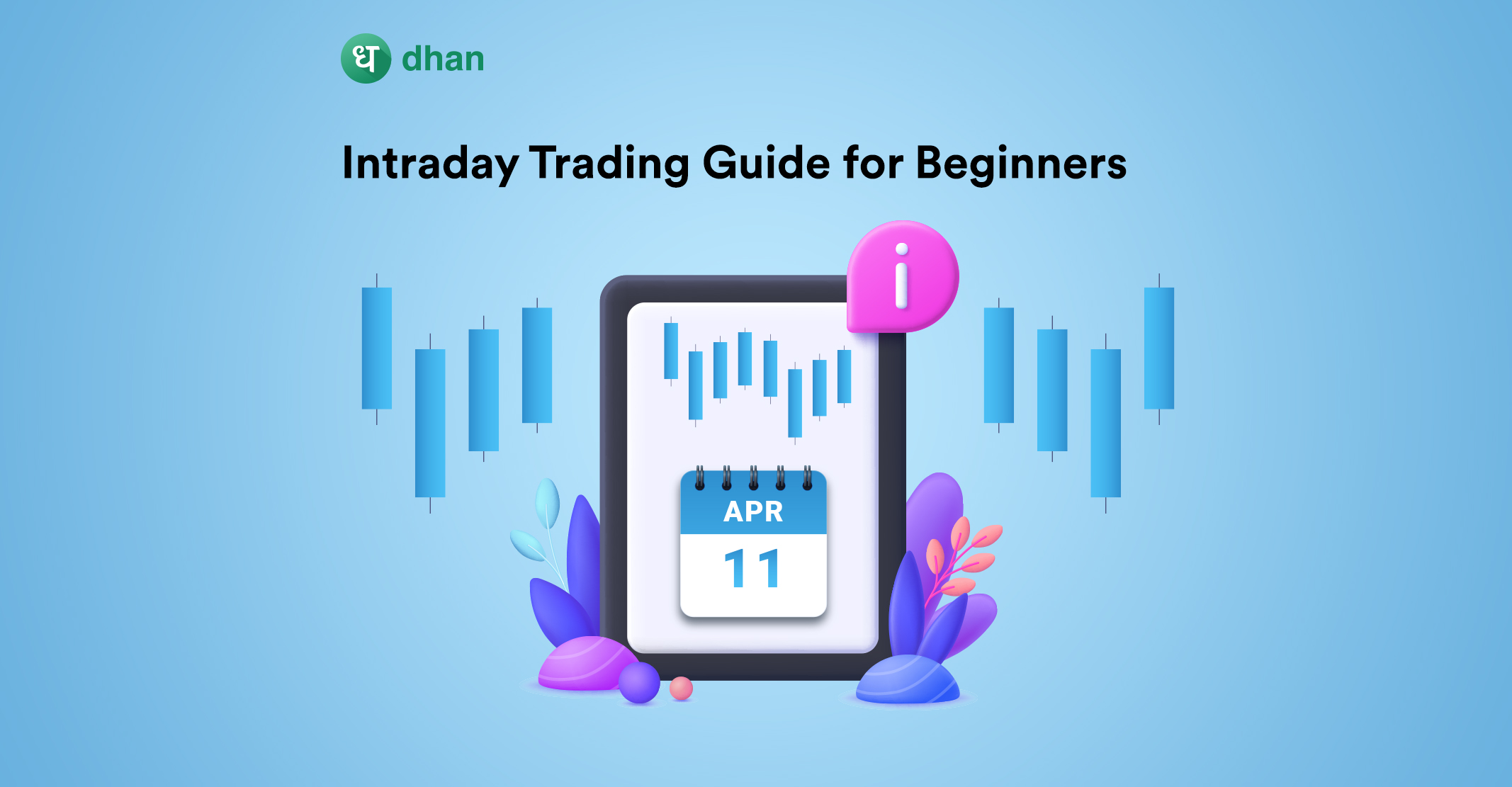The world of trading is diverse. You could buy and sell stocks over a few weeks to make gains. Folks call this swing trading. Or, you could buy and sell stocks on the same day. This is known as intraday trading. If you’ve landed on this blog, it’s likely that you want to learn about and master the art of intraday trading. Lucky for you, this intraday trading guide for beginners will help you do that!
Overview of Intraday Trading
You could simplify the term “intraday” as “in one day”. This will make the definition of intraday trading clear, as it means buying and selling stocks the same day and not carrying it forward to the next day. In the world of equity trading, buying or selling a stock is known as “taking a position”.
The typical intraday trader will exit positions before the stock market closes. But the question is, how do they even know which position to take? The answer is technical analysis. Stocks are, in principle, all about numbers and numbers can be forecasted using various techniques.
If you use mathematical equations to forecast where a stock may be heading, especially the ones that can be represented on candlestick charts, then you have technical analysis. A technique like this can allow you to understand movements that you can use to take and exit positions within a day.
Furthermore, you can use a trading account to take positions as an intraday trader while a demat account may not be necessary, although most brokers let you open an 2-in-one account that contains trading & demat account access.
Taking delivery of stocks is one of the key distinctions between intraday and regular trading. As an intraday trader, you are required to square off your trading position the same day before the market closes, regardless of profit or loss. This is typically at 3:15 pm for the stock market.
Even if you don’t square off your position, it will automatically get squared off at the market rate at this particular time. But your broker will charge you for this feature. By the way, you could even use stock trading APIs to automate intraday squareoffs.
The Complete Intraday trading guide
Now that the lifecycle of intraday trading is clear, let’s move on to the nuances that can help you decide when, where, and how to begin intraday trading.
1. Choose Liquid Stocks
It is important to remember that in online intraday trading, the liquidity of the stocks is quite essential. Since you need to square off the position before the end of the day, dealing in liquid stocks is one of the most important principles of the day trading market.
With adequate liquidity, you can ensure that there is little to no limitation in trading volumes which enables you to exit the market at any time.
2. Enter and Exit at the Appropriate Times
Intraday trading does not cover a widespread. This provides you with the opportunity for low-risk entry positions with a great potential for profit if the trend continues.
Identifying such trends helps you in the development of appropriate entry and stop-loss tactics. To judge the right entry price, you need to research and get acquainted with various day trading strategies. These will help you determine the right entry and exit prices.
To determine when to quit, consider two conditions: when you have met your goal profit or when you have reached the maximum loss limit.
Read 👉 Swing Trading Vs Day Trading
3. Set a Stop Loss
Talking about reaching the maximum loss limit, you should always have a stop loss set. Day trading for beginners comes with the tag of ‘handle with care’ and a stop loss or trailing stop loss is the protection you would require.
A stop loss is one of the day trade strategies you might use if your trend or anticipation does not pan out.
If, on the other hand, your prediction comes true, you should know how to set several target levels – T1, T2, etc. – so that you may exit at different price points. When you set a stop loss, your position automatically cuts off to prevent any further losses!
4. Avoid Being Impulsive
Sometimes, the trade may not go as planned. In these situations, it is often common for beginners to make impulsive and rapid decisions.
Remember that while you need to be spontaneous in the intraday trading market, you can not be impulsive.
You should have a well-defined profit and stop-loss target and should not allow your impulsive tendency to govern your trading activities. To trade well, you must always be aware and in control.
5. Avoid Trading in Penny Stocks
Penny stocks have the potential to generate profits but also have a high level of volatility. While intraday trading relies on market volatility to make profits, you may experience heavy loss on penny stocks.
The reason? Penny stocks lack liquidity and stability. In fact, penny stocks may hit the lower circuit often compared to large stocks, which can be risky for you as a beginner as you won’t be able to exit your position on time.
6. Be Vigilant
Intraday trading requires you to keep a continuous watch on the market at all times to find the right time to exit the market. You need to be vigilant and spontaneous in making decisions to make the most out of this trade! For this, you can keep alerts on different portals such as Dhan to stay updated and on your toes to make a trade.
Conclusion
Intraday trading is difficult. However, there are several intraday traders who are successful in creating wealth because they’re disciplined and knowledgeable. Not to forget, every successful trader relies on one or more intraday trading strategies.
Furthermore, intraday trading requires you to constantly monitor the market in order to spot the right entry and exit points, both of which may be difficult to execute if you’re working full-time. Either way, you can begin intraday trading with free indicators, charts, and much more on Dhan!



